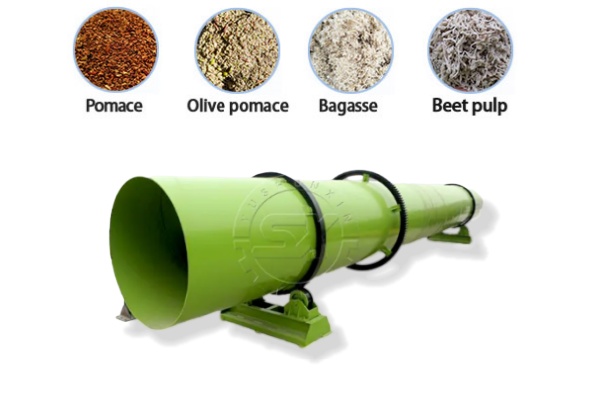Pomace, a by-product generated from fruit and vegetable juice manufacturing, wine making, and other food processing industries, contains high levels of moisture and organic matter. As environmental awareness grows and waste management regulations tighten, many fertilizer producers now seek efficient methods to convert wet organic residues like apple pomace, grape pomace, citrus peel, and tomato skins into valuable organic fertilizers. These fertilizer manufacturing processes require advanced pomace drying techniques designed to optimize production, reduce waste, and enhance the market value of the final granulated fertilizer.
What Are the Specific Needs and Benefits of Pomace Drying for Different Fertilizer Producers?
Various industries handle a wide range of organic waste materials, each with unique characteristics. Fruit juice manufacturers, for example, generate apple pomace and grape pomace with moisture contents often exceeding 80%. Wineries face similar challenges, as grape marc and stems quickly spoil if not processed efficiently. In the vegetable processing sector, tomato pomace and other plant residues can rapidly deteriorate due to high water content.
For these fertilizer producers, effective pomace moisture reduction ensures stable storage, transport, and further processing. By lowering water content before composting or granulating, producers prevent the rapid growth of spoilage organisms and reduce odors. Pomace drying also increases the density of organic fertilizer particles, which simplifies packaging, storage, and distribution. Furthermore, dried pomace serves as a uniform raw material for subsequent composting and granulation procedures, ensuring a consistent quality of finished organic fertilizer products such as granules or pellets.

Which Equipment Innovations Drive Efficient Pomace Drying for Fertilizer Production?
Modern pomace drying machinery incorporates several advanced features that support fertilizer producers in managing water reduction efficiently. The pomace dryer, as the core equipment in this process, incorporates precise temperature control, optimized airflow design, and advanced material agitation mechanisms. These features accelerate the dehydration process and ensure even drying, reducing the moisture content of raw pomace from over 80% to below 10% without compromising its nutrient value.
Some production systems combine a multi-stage approach for pomace moisture reduction. The first stage often involves a dewatering machine, which mechanically removes excess water, bringing moisture levels from over 90% down to around 60-70%. Next, a pomace dryer further reduces water content, enabling stable storage and handling. Compost turners or composting machines then facilitate aerobic decomposition, transforming the semi-dried pomace into mature compost. Finally, advanced wet granulators or pellet making machines shape the composted pomace into uniform fertilizer granules or pellets, ready for blending, packaging, and application.
How Do Advanced Pomace Drying Techniques Improve Fertilizer Granulation and Production?
A streamlined pomace drying system offers significant benefits in the context of fertilizer granulation and production. When drying machines consistently decrease moisture content to industry standards, organic fertilizer manufacturers can achieve stable granule formation in downstream pelletizers or granulators. This stability leads to improved product durability, longer shelf life, and enhanced nutrient release profiles.
In addition, integrating pomace drying with other equipment like dewatering machines and compost turners allows for a continuous, automated organic fertilizer preparation process. Producers experience higher efficiency, lower energy consumption, and reduced labor costs. Comprehensive water reduction technology not only improves the quality of the finished fertilizer particles but also supports sustainable waste management by transforming previously discarded pomace into profitable, eco-friendly products.
Why Should Fertilizer Producers Invest in State-Of-The-Art Pomace Drying Equipment?
Fertilizer manufacturers face increasing demand for high-quality, sustainable organic fertilizer granules derived from pomace and other high-moisture organic residues. Investing in advanced pomace drying machinery ensures reliable water reduction, superior granulation results, and scalable production capacity. These benefits translate directly into higher market competitiveness and compliance with environmental standards.
For those seeking reliable solutions, a professional drying equipment manufacturer—Yushunxin—offers comprehensive systems for pomace drying, dewatering, composting, and granulation. With tailored designs and robust engineering, Yushunxin’s machines empower fertilizer producers to transform diverse pomace materials into top-quality organic fertilizer pellets, supporting both profit and sustainability in modern waste valorization. You can visit: https://www.fertilizerdryer.com/pomace-drying-machine/